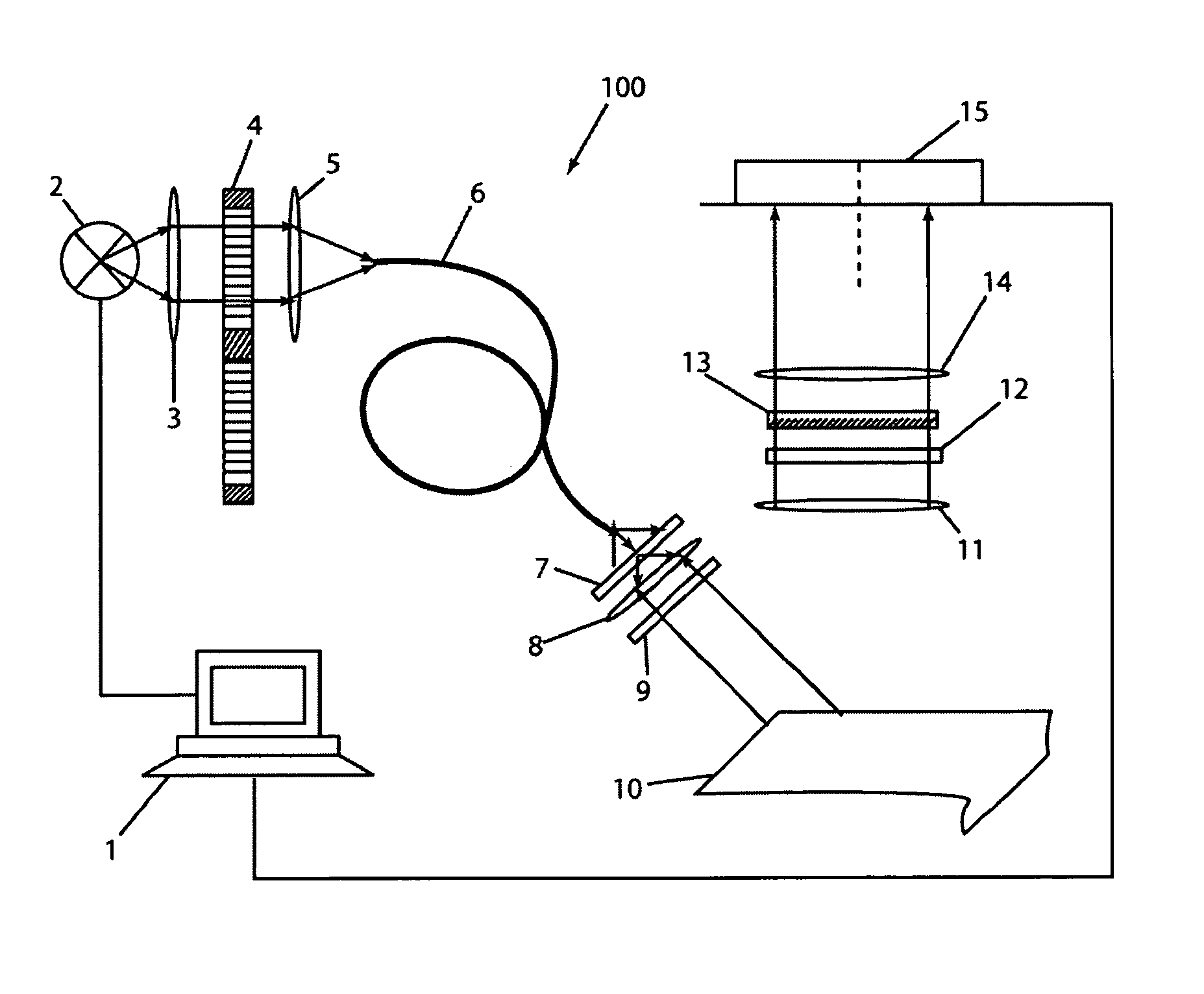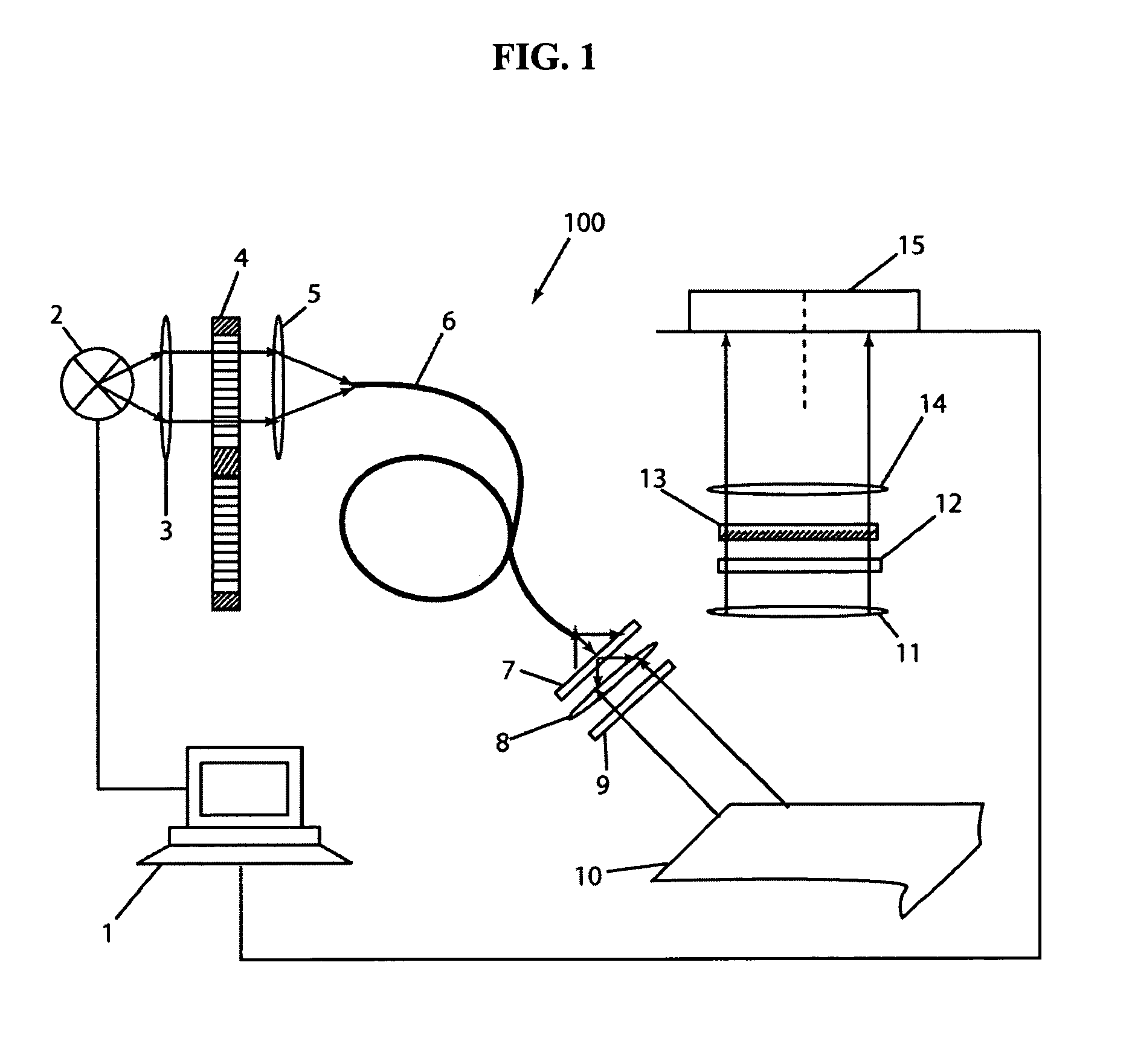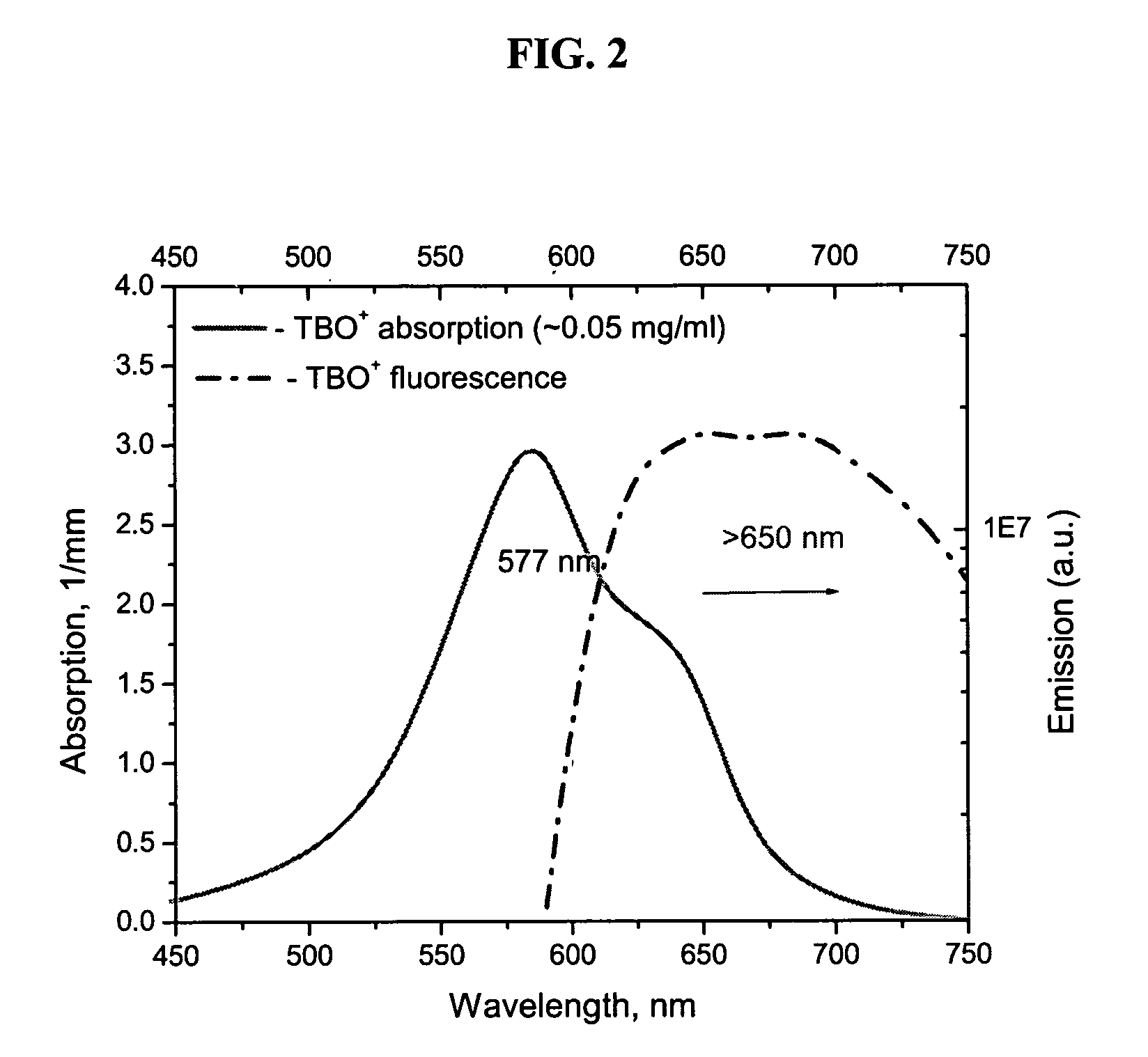Fluorescence polarization imaging devices and methods
a fluorescence polarization and imaging device technology, applied in the field of real-time methods for imaging organic tissue, can solve the problems of difficult excision, time-consuming and laborious procedures, and visual detection of tumor borders, and achieve the effect of increasing the number of surgical procedures and improving standard cancer surgery
- Summary
- Abstract
- Description
- Claims
- Application Information
AI Technical Summary
Benefits of technology
Problems solved by technology
Method used
Image
Examples
examples
[0062] The present invention will be further described by referring to FIGS. 5-9, which depict images of tissues acquired by the PLI method. As will be readily apparent, applying contrast agents, such as MB and TB, greatly improves the contrast of the tumor within the image.
[0063] Image of tissue acquired by the FPLI method will be further described by referring to FIGS. 2-6. As will be readily apparent, applying fluorescent contrast agents, such as TBO and TCN, greatly improves the contrast of the tumor within the image.
[0064] TCN is a highly fluorescent antibiotic. The fluorescence of TBO can be readily detected also. The absorption and fluorescence emission spectra of TBO and TCN are shown in FIGS. 2 and 3, respectively. Commercially available TBO (TB 1% AQ, LC26165-1, Fischer Scientific Company, USA) and tetracycline were used to stain the tissue.
[0065] An additional filter was introduced in front of the CCD 15 of imaging apparatus 100 to cut-off the excitation light. Excitat...
PUM
 Login to View More
Login to View More Abstract
Description
Claims
Application Information
 Login to View More
Login to View More - R&D
- Intellectual Property
- Life Sciences
- Materials
- Tech Scout
- Unparalleled Data Quality
- Higher Quality Content
- 60% Fewer Hallucinations
Browse by: Latest US Patents, China's latest patents, Technical Efficacy Thesaurus, Application Domain, Technology Topic, Popular Technical Reports.
© 2025 PatSnap. All rights reserved.Legal|Privacy policy|Modern Slavery Act Transparency Statement|Sitemap|About US| Contact US: help@patsnap.com



